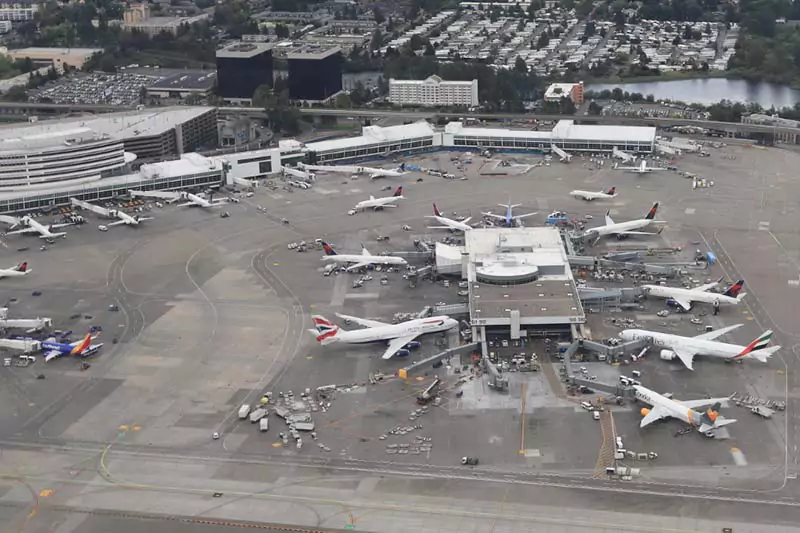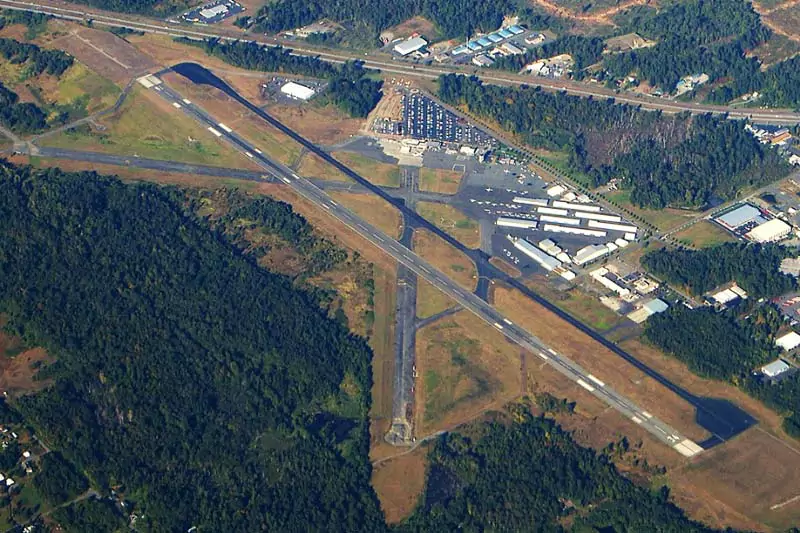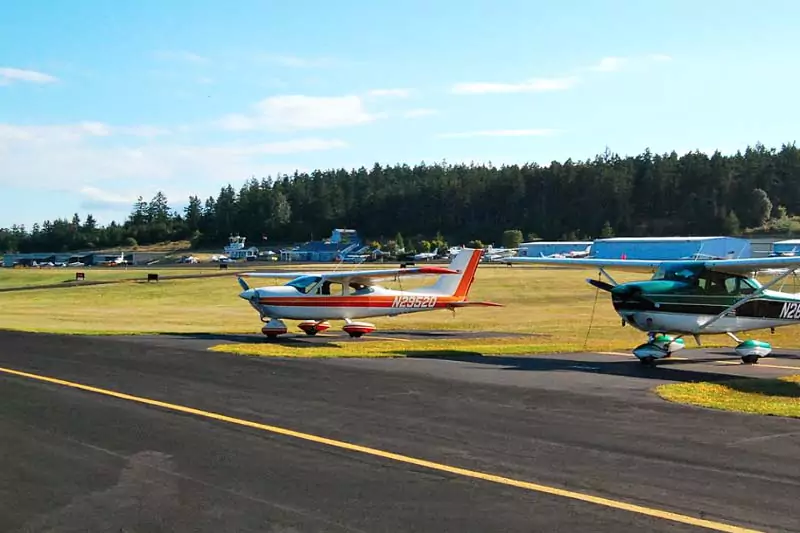Airports in Washington State: Discover the Bests Options Guide
Washington State, a land where the mighty Pacific meets lush forests and towering mountains, is also a realm of bustling airports and aerial gateways. From the behemoth that is Seattle-Tacoma, serving millions of passengers yearly, to the hidden gems like Everett and Eastsound, each airport tells a story of adventure and connectivity.
- Airports in Washington State
- Seattle-Tacoma International Airport (SEA)
- Spokane International Airport (GEG)
- Bellingham International Airport
- Tri-Cities Airport
- Pullman-Moscow Regional Airport
- Pangborn Memorial Airport
- Friday Harbor Airport
- Walla Walla Regional Airport
- Yakima Air Terminal
- King County International Airport
But what really goes on behind the scenes at these airports? How do they shape the experiences of countless travelers, from anxious first-timers to seasoned globetrotters? And with so many options, from major US hubs to regional connectors, how do you choose the right one for your journey?
Airports in Washington State
Seattle-Tacoma International Airport (SEA)
Seattle-Tacoma International Airport, colloquially known as Sea-Tac, is a significant transportation hub in Washington State, renowned for its blend of a fast-paced transport environment and the charming ambiance of the Pacific Northwest.
The airport’s location, just a 20-minute drive from downtown Seattle, positions it as a prime gateway for travelers seeking to explore the city’s rich mix of arts, culture, and natural splendor.

Sea-Tac’s expansive network encompasses flights to international locales like Cancun and Seoul, in addition to maintaining strong connections with major U.S. cities. The airport hosts over 30 airlines, such as Alaska Airlines, Virgin Atlantic, and Air Canada, thus catering to a wide spectrum of travel preferences.
Its vibrant culture extends beyond its operational role, offering diverse amenities that transform waiting times into enjoyable experiences.
These include a variety of dining options reflecting Seattle’s food scene, an array of shops for retail therapy, and practical facilities like free WIFI, charging outlets, a children’s play area, and a pet relief area. For those seeking luxury, the airport also offers exclusive airline lounges and duty-free shopping, enhancing the travel experience significantly.
Spokane International Airport (GEG)
Spokane International Airport (GEG), the second busiest in Washington State, provides a crucial connection to Eastern Washington. Its proximity to downtown Spokane, only seven miles away, makes it a more relaxed yet efficient alternative to Sea-Tac.
Despite its smaller scale, GEG offers direct flights to major U.S. cities like Denver, Los Angeles, and San Francisco, supported by airlines including Southwest, American Airlines, and Delta. This makes it an essential hub for both leisure and business travelers, though it does not currently offer direct international flights.
GEG’s atmosphere reflects the welcoming spirit of Spokane, with dining options ranging from fast-food chains to local bars like the Spokane Tap Room. The airport also includes newsstand shops for last-minute essentials and snacks, embodying the convenience and efficiency of modern travel. While GEG’s connectivity is primarily focused on major U.S. cities, it plays a pivotal role in connecting travelers to global destinations through other junctions.
Bellingham International Airport
Bellingham International Airport (BLI), a prominent airport in Washington State, stands out for its strategic location and efficient service. As one of the key washington airports, BLI offers a gateway to the city of Bellingham and nearby areas, including Vancouver and the San Juan Island.
This airport, noted for its ease of use and convenience, caters to a significant number of passengers annually, making it a vital component of the list of airports in Washington.

BLI’s services are designed to accommodate the needs of its diverse clientele. The airport provides an array of facilities, maintaining its status as a primary airport in the state of Washington. Its connectivity to major U.S. airports and its role in facilitating aviation in the region are commendable.
With airlines like Allegiant operating from BLI, the airport ensures a broad spectrum of flight options for both domestic and international travelers. This combination of strategic location, comprehensive services, and a focus on passenger comfort positions BLI as a top choice for travelers in and out of Washington State.
Tri-Cities Airport
Tri-Cities Airport, located in the southeastern part of Washington State, is an integral part of the aviation network in the region. Serving the cities of Pasco, Kennewick, and Richland, it’s a central hub for both business and leisure travel.
The airport’s location makes it an important gateway for the area, especially for communities in and around Pasco and the broader state of Washington. As a public-use airport, it plays a significant role in supporting local and regional connectivity.
The airport’s services and facilities cater to a growing number of passengers each year, highlighting its importance among washington airports. It provides direct connections to several major U.S. cities, making it a practical choice for travelers looking to explore different parts of the country.
The airport’s efficient management, combined with its commitment to providing quality service, ensures a pleasant and smooth experience for all its users. As a result, Tri-Cities Airport stands as a key player in the list of airports in Washington, contributing significantly to the state’s transportation infrastructure and the aviation sector.
Pullman-Moscow Regional Airport
Pullman-Moscow Regional Airport, a vital link in the network of smaller regional airports in Washington State, serves the communities of Pullman and Moscow, as well as the students and faculty of Washington State University.
This airport, nestled in the picturesque inland northwest region, offers a tranquil yet efficient travel alternative compared to larger, busier airports. Its significance lies not only in its service to the local community but also in its role as a conduit to major cities and international destinations.
Despite its status as a small airport, Pullman-Moscow Regional Airport efficiently handles the travel needs of its passengers, ensuring a seamless connection to broader travel networks. The airport’s strategic location, close to major educational institutions and the vibrant communities of Pullman and Moscow, makes it an essential part of travel plans for a trip to Washington State.
Its focus on providing quality service, coupled with its role in supporting regional connectivity, positions it as a key player among US airports, particularly in the Pacific Northwest region.
Pangborn Memorial Airport
Pangborn Memorial Airport, located near Wenatchee in Central Washington, stands as a testament to the importance of regional airports in connecting smaller communities to larger urban centers.
This airport, named after the aviation pioneer Clyde Pangborn, is a crucial gateway for residents and visitors to Wenatchee, offering easy access to the city and the surrounding areas. Its location is especially significant for those interested in exploring the natural beauty and agricultural richness of Central Washington.
Pangborn Memorial Airport may be smaller in scale, but it plays a big role in the aviation landscape of the state, linking Wenatchee to key destinations like Spokane Airport and Seattle-Tacoma International Airport (Sea-Tac).
The airport’s user-friendly atmosphere and efficient operations make it a preferred choice for travelers seeking a convenient and hassle-free travel experience. As a hub that bridges Wenatchee with major U.S. cities and beyond, Pangborn Memorial Airport exemplifies the value of regional airports in enhancing the connectivity and mobility within Washington State and the broader Pacific Northwest region.
Friday Harbor Airport
Friday Harbor Airport, situated in the San Juan Islands of Washington State, is a prominent feature in the region’s aviation landscape. As a crucial connection point to the picturesque San Juan Islands, the airport plays a significant role in facilitating tourism and local travel.
Known for its scenic beauty and unique island charm, Friday Harbor Airport offers a tranquil and enjoyable travel experience, a stark contrast to the bustling environment of larger airports. The airport is particularly important for the residents of the San Juan Islands, providing them with essential connectivity to the mainland and other regions.

The airport caters to a mix of commercial and private aviation, reflecting the diverse needs of its users. While it does not serve as a hub for major airlines, its strategic location and the services it offers make it an important gateway for visitors exploring the natural beauty and cultural richness of the San Juan Islands.
The airport’s facilities, though modest compared to larger airports, are well-suited to meet the needs of its passengers, offering a comfortable and efficient travel experience.
Walla Walla Regional Airport
Walla Walla Regional Airport is a key airport in Southeastern Washington, serving the city of Walla Walla, known for its vibrant wine industry and cultural heritage.
The airport’s location makes it a pivotal gateway for tourists and business travelers alike, providing access to one of Washington’s most renowned wine-producing regions. Walla Walla Regional Airport effectively supports the region’s economic growth by facilitating travel and tourism, which are integral to the area’s wine industry.
The airport offers a range of services to accommodate the needs of its passengers, including flights to major cities. Its role in connecting Walla Walla to larger metropolitan areas is crucial, not only for local residents but also for visitors looking to explore the unique attractions of the region.
Despite its smaller size, Walla Walla Regional Airport maintains a high standard of service, ensuring a pleasant and convenient travel experience. The airport’s contribution to the regional transportation network underscores its significance in Washington’s overall aviation infrastructure.
Yakima Air Terminal
Yakima Air Terminal, located in the heart of Central Washington, is a significant component of the region’s transportation infrastructure. This airport serves the city of Yakima and its surrounding areas, providing an essential link between this agricultural heartland and other major regions.
Its strategic location makes it a vital hub for both business and leisure travel, facilitating easy access to the diverse landscapes and rich agricultural bounty of Central Washington.
The airport offers a range of services that cater to the needs of its passengers. While it may not be as large as some of the major airports in Washington, Yakima Air Terminal maintains a high standard of service and efficiency.
It supports various commercial and private flights, playing a crucial role in connecting the local community to larger urban centers. The terminal’s facilities are designed to ensure a comfortable and convenient travel experience, making it a preferred choice for travelers in and out of Yakima.
King County International Airport
King County International Airport, also known as Boeing Field, is a key aviation facility in the state of Washington. Situated close to Seattle, it serves a diverse range of aviation needs, from commercial passenger flights to private and corporate aviation.
The airport’s proximity to Seattle makes it a strategic alternative to the larger Sea-Tac Airport, offering easier access and less congestion for travelers.
This airport plays a vital role in supporting the region’s aviation needs. It caters to a significant volume of air traffic, reflecting its importance in the network of airports in Washington.
King County International Airport provides a variety of services, accommodating both commercial and private flights. Its facilities are equipped to handle the demands of a busy airport, ensuring a smooth and efficient travel experience for all its users.
As a crucial part of the aviation infrastructure in the Puget Sound region, King County International Airport is an essential gateway for travel and commerce in the Pacific Northwest.
Conclusion
As we’ve journeyed through the vast and varied world of Washington State’s airports, from the largest airport bustling with international flights to the serene general aviation fields, a vivid picture emerges. These are not just transit points but vibrant ecosystems, each playing a pivotal role in connecting people, dreams, and destinations.










